Restoration Ripple Effects
On the banks of the Snoqualmie River, along the easternmost stretch of Oxbow’s “Big Farm Loop Trail,” you can observe riparian forests at various stages of growth—from knee-high baby trees in newer restoration sites to an undisturbed, century-old natural forest. Here, the difference between weaker and healthier shorelines can be not only seen but also heard. In contrast to the quieter, less active areas with young plantings, the more mature woods are noticeably alive with innumerable bird calls and songs, caroling from lush shrubs and towering maple and cottonwood trees. This area provides ideal habitat, food sources, and breeding grounds for various plant and animal species, including insects, birds, bobcats, elk, deer, beavers, otters, and coyotes. But did you know that riparian forests like these also support salmon?
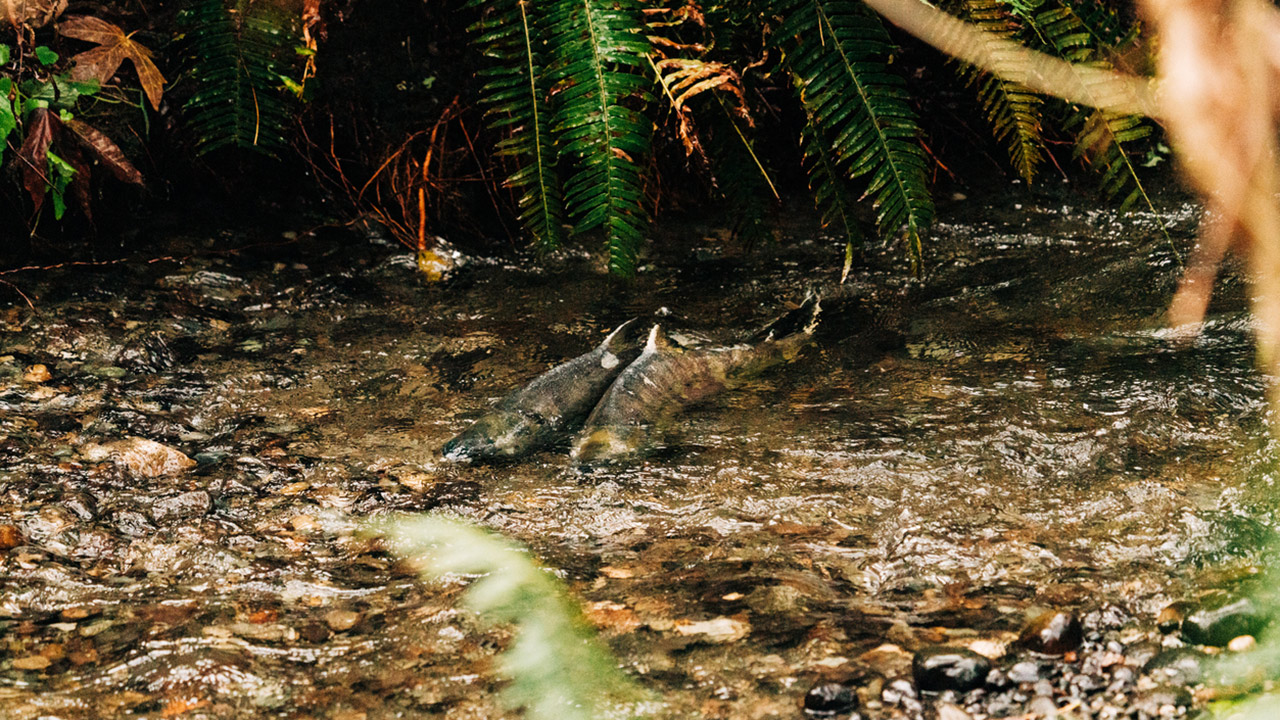
Forests Foster Salmon
Tall timber and verdant vegetation of riparian forest provide shade along the river, helping to regulate water temperature and maintain cool, salmon-friendly conditions. Woody debris finds its way into the water and offers crucial shelter for young salmon, protecting them from predators. Leaf litter offers crucial organic material that supports aquatic insects—the base of the salmon’s food chain. Additionally, the roots of the streamside plants play a key role in soil stabilization, safeguarding the integrity of the riverbanks, and preventing erosion and sedimentation from smothering salmon eggs and gravel nests.
Salmon Foster Forests
After spending years in the open ocean, salmon return to the freshwater streams of their birth and youth to spawn and complete their life cycle. During this process, which culminates in decomposition, salmon bring back a valuable supply of marine-derived nutrients, including nitrogen and phosphorus, that provide essential nourishment for a variety of plants and wildlife, helping forests thrive. This reciprocal relationship between salmon and forests strengthens both as they contribute essential components to each other’s vitality.
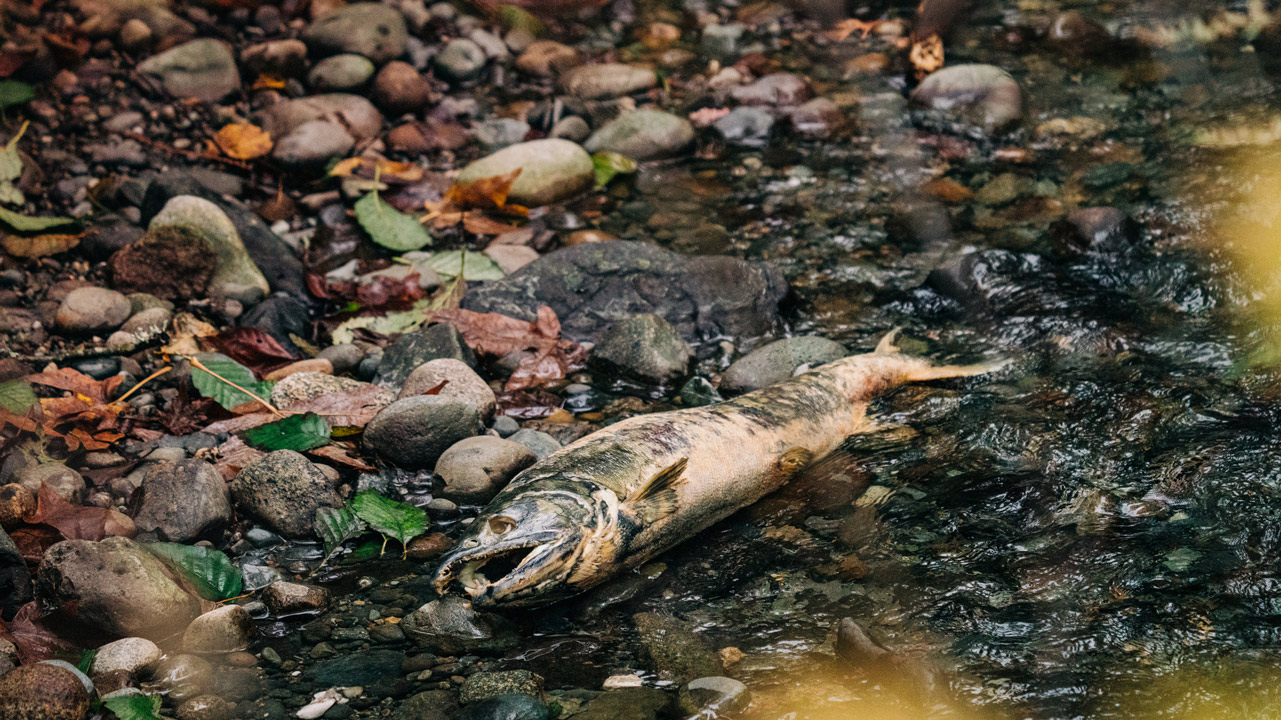
Riparian Restoration at Oxbow
For over 20 years, we’ve reforested thousands of linear feet of riverbank at Oxbow and throughout the Snoqualmie River watershed. In collaboration with volunteers and community partnerships, we’ve removed dense thickets of invasive species, and restored the riparian zone with native trees, shrubs, and flowering perennials. With each planting, our vision is for these young seedlings to mature into a flourishing forest. Our efforts have already transformed terrain back into a thriving ecosystem teeming with life. The remarkable ripple effect of our work extends to the river’s well-being and salmon health—fostering a reciprocal relationship that sustains communities.
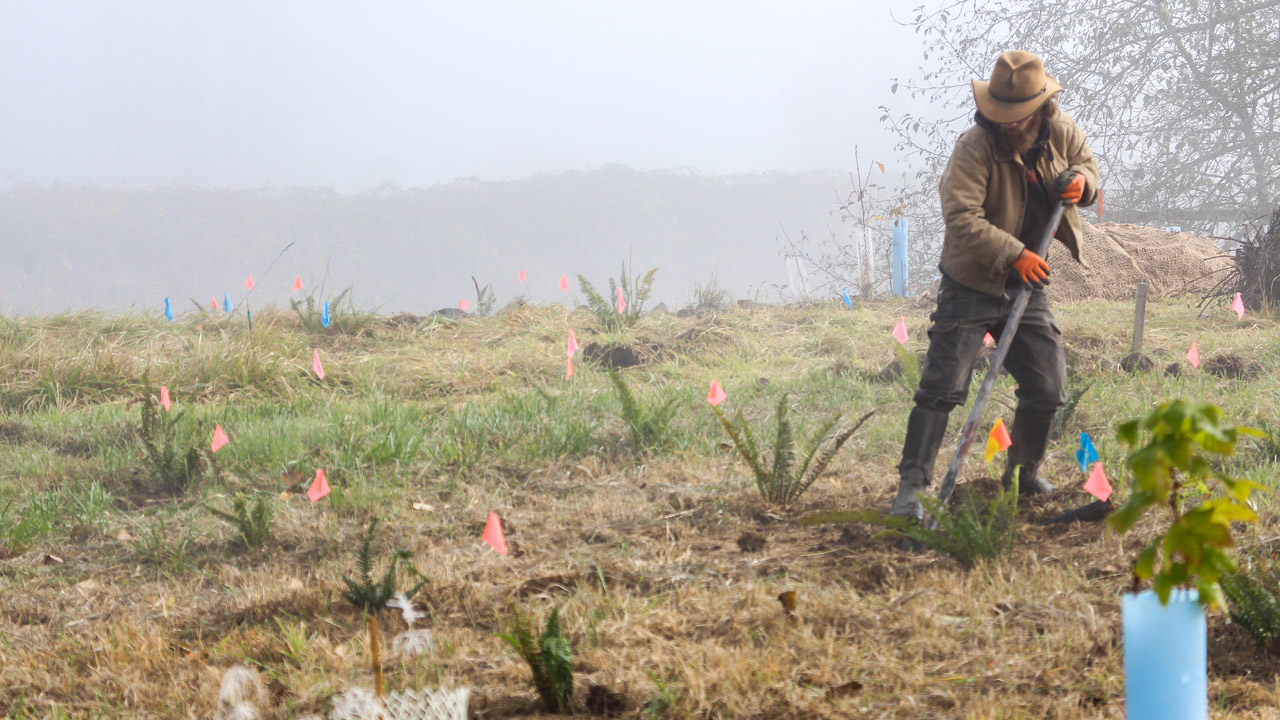
Cornerstone of Community
The Pacific Northwest is home to eight salmonid species: fall chinook, coho, chum, pink, summer and winter steelhead, sockeye, cutthroat, and bull trout. These fish are deeply rooted in the cultural heritage of indigenous people and have sustained human and non-human communities for thousands of years. From trade economies to nutrient cycling, salmon have a considerable influence on their environment, and have become a symbol of ecosystem health.
Cultural Significance
The Columbia River Inter-Tribal Fish Commission highlights a few ways Pacific salmon are interwoven within the identities and ways of life of indigenous communities and many people who call the Pacific Northwest home:
- Staple Food: For generations, salmon has served as a primary food source in indigenous diets. Historically, the average tribal member consumed nearly a pound of salmon daily.
- Spiritual Symbol: Salmon are recognized as much more than a resource. Indigenous peoples build relationships with reciprocity and respect, and revere salmon as family gifted by the Creator. Salmon are central to tribal gatherings, celebrations, ceremonies, and spiritual traditions—representing renewal and the cycle of life.
- Fishing Technology & Tradition: Salmon inspired the development of intricate techniques and tools, including fish weirs and dip nets, passed down through generations. These traditional practices foster a deep awareness and regard for the interconnection between communities, land, and sea.
- Intertribal Connections & Economic Prosperity: Trade networks between tribes allow for the exchange of salmon and other resources, creating economic interdependence. Additionally, the commercial fishing of salmon is a significant source of income and employment opportunities for local communities, contributing to economic well-being.
For further information, read The Sociocultural Significance of Pacific Salmon for Tribes and First Nations. This report from Earth Economics shares insights learned from engagement with the Tribal and First Nations Caucuses to the Pacific Salmon Commission.
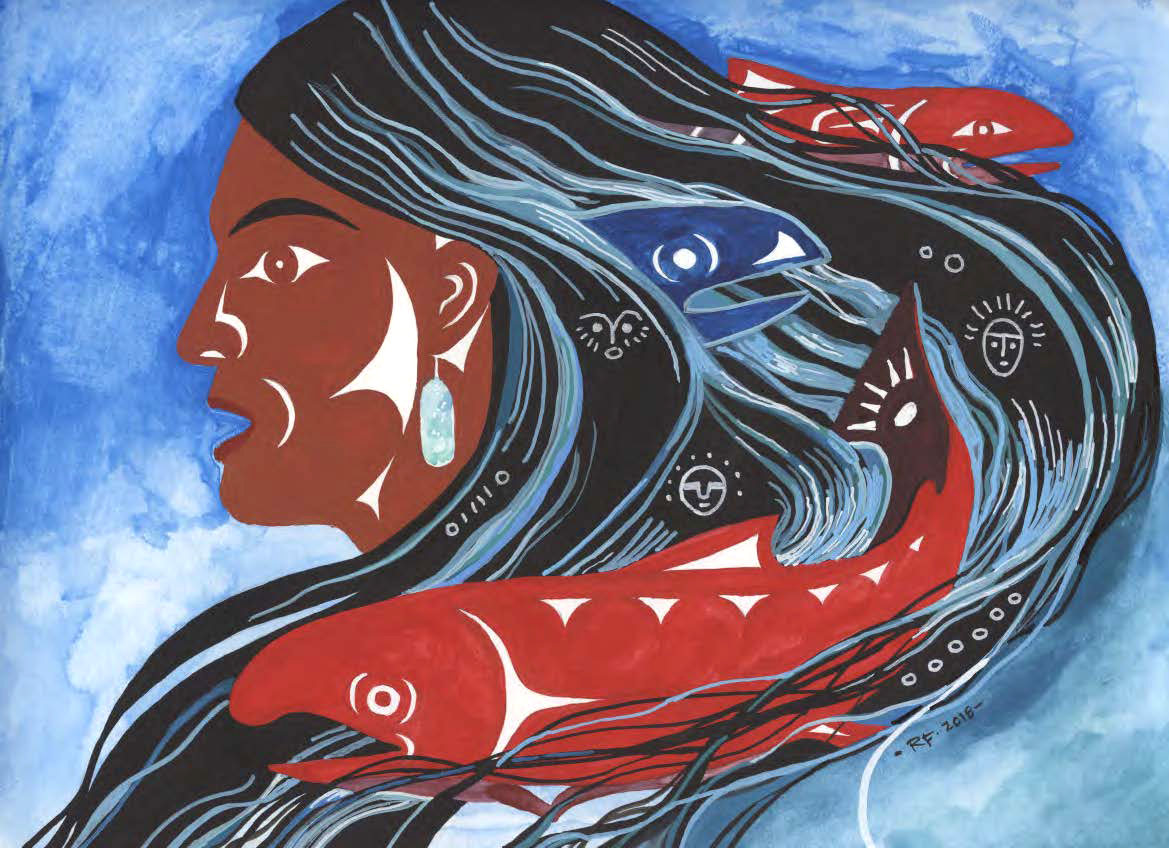
Ecological Impact
Salmon’s unique life cycle weaves freshwater, saltwater, and terrestrial environments, making them a keystone species in the intricate food web. Their migration provides nutrients to numerous wildlife species, from herons and eelgrass to sea lions, orca whales, eagles, and bears. Because salmon have such a profound influence on their environment, their presence or absence can be a valuable indicator of specific habitat conditions and the overall health of the ecosystem.
Healthy salmon populations can imply:
- Clean Water
- Habitat Diversity
- Balanced Predator-Prey Relationships
- A Robust Food Web
- Limited Human Disturbances
- Cultural and Economic Prosperity
Conversely, declining populations may suggest:
- Polluted Water
- Habitat Loss and Degradation
- Overfishing
- Altered Water Flow or Temperature
- Invasive Species
- Human Development & Urbanization
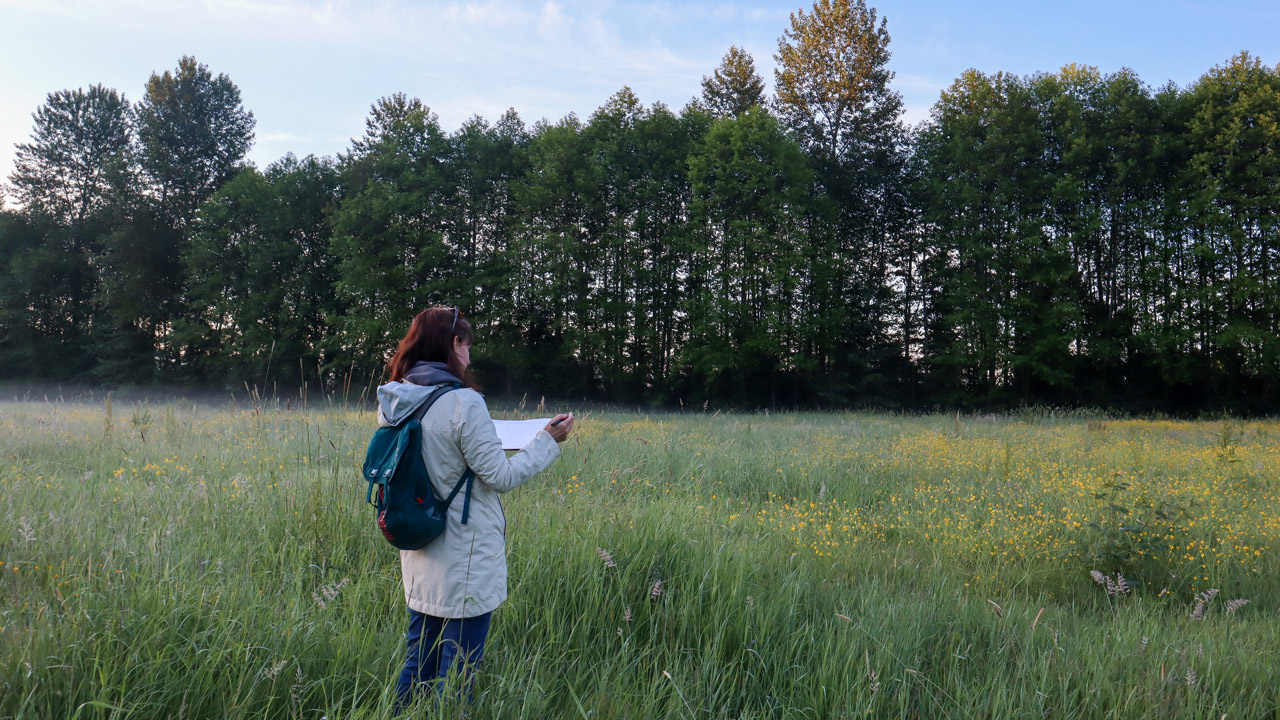
Protect Salmon, Protect Life
The vitality of salmon offers a valuable lesson in reciprocity. There are numerous actions we can take together to protect salmon health, which, in turn, contributes to our own well-being. From sharing indigenous knowledge to riparian restoration, our collective efforts create a ripple effect throughout the entire ecosystem, nurturing our communities and cultivating a healthy environment for future generations of plants, animals, and humans alike!
“As water becomes degraded and fish populations decline, so too will the elk, deer, roots, berries and medicines that sustain us.” – Columbia River Inter-Tribal Fish Commission
Simply put, everything is connected. If you take care of salmon, salmon take care of you.
How you can help
- Prioritize indigenous management in fishing and conservation practices
Cultural needs, knowledge systems, traditions, and practices are central to Indigenous management approaches, and deserve acknowledgement and incorporation into government agency decisions. - Buy certified Salmon-Safe products
Did you know Oxbow has been a certified Salmon-Safe farm since 2004? - Grow native plants and encourage your friends and neighbors to do the same
According to ecologist Doug Tallamy, “If half of American lawns were replaced with native plants, we would create the equivalent of a 20-million-acre national park, nine times bigger than Yellowstone or 100 times bigger than Shenandoah National Park.” - Volunteer
Join Oxbow’s Conservation Team on the 2nd Saturday of each month to improve critical habitats for plants and wildlife and help combat climate change. - Support indigenous-led community work
Na’ah Illahee reinvests in and provides resources for Native communities through funding Indigenous-led projects and providing community-responsive support, technical assistance and leadership development. - Support Oxbow’s work & mission
Donations help amplify environmental efforts at Oxbow and beyond.
